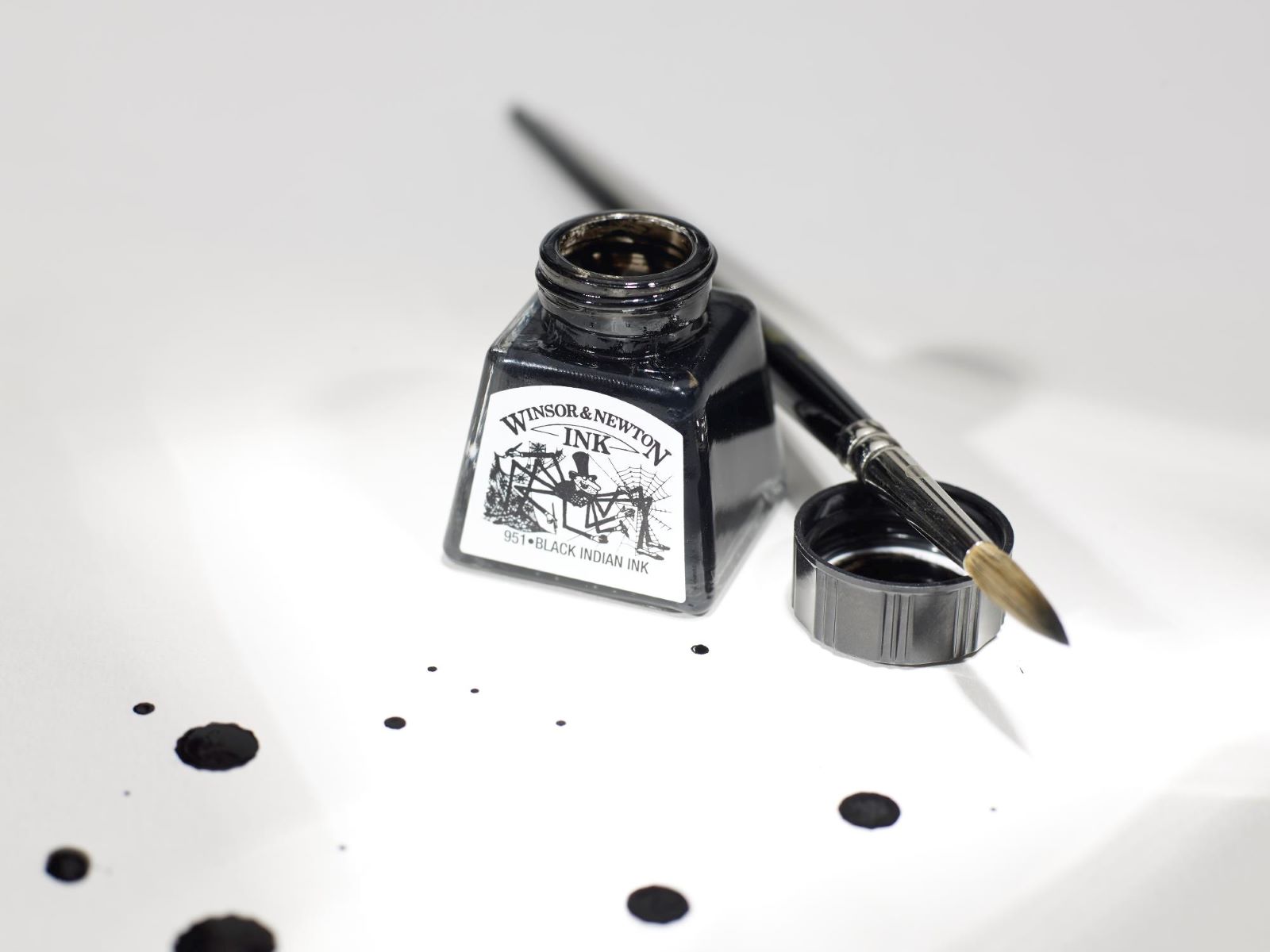
Ink is a fascinating substance that has played a significant role in human history for thousands of years. From the earliest forms of ink made from natural dyes to the modern pigmented inks used today, this ubiquitous liquid has evolved and shaped various aspects of our lives. Whether we realize it or not, ink is an essential part of our daily routines, from writing with a pen on paper to printing documents or even getting tattoos. In this article, we will explore 20 captivating facts about ink that will not only amaze you but also deepen your appreciation for this commonly used yet often overlooked substance. So, let’s dive into the world of ink and discover its secrets and intriguing history.
Key Takeaways:
- Ink has a rich history and comes from various sources, including plants and minerals. It’s used for printing, tattooing, and art, making it a versatile and essential tool for self-expression.
- Different types of ink have unique properties, like drying times and colors that can fade over time. From ancient quill pens to modern digital ink, it’s been a crucial part of human creativity for thousands of years.
Ink has been used for thousands of years.
Ink has a long history, dating back to ancient civilizations such as the Egyptians and the Chinese.
Ink can be made from various sources.
Ink can be derived from natural sources like plants, animals, and minerals. Synthetic inks are also commonly used today.
The earliest inks were made from carbon black.
Ancient Egyptians used carbon black mixed with gum arabic to create their ink.
The process of tattooing involves injecting ink into the dermis layer of the skin.
Tattoo ink is specifically designed to be long-lasting and safe for the human body.
Ink plays a crucial role in the printing industry.
From newspapers to books to packaging materials, ink is essential for printing words and images on various surfaces.
Ink can come in different colors.
There are countless shades of ink available, allowing for vibrant and diverse artwork and writing.
Fountain pens use liquid ink.
Unlike ballpoint pens, which use oil-based ink, fountain pens utilize liquid ink to create a smooth writing experience.
Ink cartridges for printers can be replaced.
When the ink runs out in a printer, the ink cartridge can be replaced with a new one to continue printing.
Inkjet printers use tiny droplets of ink.
Inkjet printers release minuscule droplets of ink onto the paper, creating high-quality prints.
The invention of the printing press revolutionized the ink industry.
Gutenberg’s printing press allowed for the mass production of books and increased the demand for ink.
Ink is not easily erasable.
Once ink is on a surface, it is challenging to remove completely, making it a permanent form of writing and drawing.
Invisible ink can only be revealed under certain conditions.
Invisible ink is a type of ink that remains hidden until exposed to specific elements like heat or UV light.
UV ink is used for security purposes.
UV ink is often used for printing security features on documents to prevent counterfeiting.
Quill pens were commonly used in the olden days.
Quill pens were made from the feathers of birds and dipped in ink to write.
Ballpoint ink can dry out over time.
If a ballpoint pen is left uncapped or dormant for a long period, the ink inside can dry up, making it unusable.
India ink is commonly used in artwork.
India ink, also known as Chinese ink, is widely used by artists for calligraphy, drawing, and creating washes.
Different types of ink have different drying times.
Some inks dry quickly, while others take longer to dry, allowing for adjustments and corrections.
Ink can fade over time.
The colors in ink can fade when exposed to light and air, which is why proper preservation is crucial for documents and artwork.
Digital ink is used in electronic devices.
Devices like tablets and smartphones use digital ink technology to simulate writing on a screen with a stylus.
Ink can serve as a means of self-expression.
Whether through writing, drawing, or tattooing, ink allows individuals to express their creativity and personal messages.
Conclusion
In conclusion, ink is a fascinating substance that plays a crucial role in our daily lives. From its ancient origins to its modern formulations, ink has evolved significantly throughout history. Whether it’s used in writing, printing, or tattooing, ink is a medium that allows us to express our thoughts, create art, and communicate with one another.Understanding the various types of ink, such as dye-based and pigment-based, can help us make informed choices when using ink for different purposes. Additionally, knowing how ink is manufactured and its components, like solvents and colorants, can provide insight into its properties and characteristics.Ink is not just a mere liquid; it carries rich cultural significance and has been an integral part of human civilization for centuries. By delving into the world of ink, we gain a deeper appreciation for the power it holds and the impact it has had on our societies.
FAQs
1. Is ink permanent?
It depends on the type of ink. While some inks, like those used in tattoos, are designed to be permanent, others, such as those used in pens, can fade over time.
2. Can ink be removed from paper?
Ink can be challenging to remove from paper, especially if it has been absorbed into the fibers. However, there are techniques, such as using solvents or specialized erasers, that can help minimize or remove ink stains.
3. Can ink expire?
Yes, ink can expire. Over time, the components of ink can break down, causing changes in color and consistency. It’s best to check the expiration date on ink products and replace them if needed.
4. How is ink made?
Ink is made by combining colorants, solvents, and other additives. The specific manufacturing process varies depending on the type of ink being produced.
5. Is all ink safe?
Most commercially available inks are safe for their intended use. However, it’s essential to follow the instructions provided by the manufacturer and exercise caution, especially when using inks for tattoos or other applications that involve direct contact with the skin.
6. Can ink be recycled?
Yes, ink cartridges can often be recycled to reduce waste. Many printer manufacturers and third-party companies offer ink cartridge recycling programs.
7. Are all inks waterproof?
No, not all inks are waterproof. Some inks are water-soluble, meaning they can be easily washed away or smudged when exposed to water. Others, like permanent markers, are designed to be water-resistant or waterproof.
8. Can ink fade over time?
Yes, ink can fade over time due to exposure to light, heat, and other environmental factors. This is particularly evident in dye-based inks, which are more prone to fading compared to pigment-based inks.
9. Is ink only used for writing purposes?
No, ink has various applications beyond writing. It is used in printing, tattooing, artwork, and even in certain industrial processes like coding and marking.
10. Can ink colors be mixed to create new shades?
Yes, ink colors can be mixed to create new shades. This is commonly done in art and graphic design to achieve a wider range of colors and effects.
Ink's captivating history and diverse applications have piqued your interest, but there's more to explore! Delve into the intriguing world of ink spots and their unique characteristics. Uncover the inspiring stories behind those who are inked for a cause, making a difference through their tattoos. For movie buffs, don't miss out on the fascinating facts surrounding the film "Ink," which will leave you wanting to know more. Stay curious and keep learning about the multifaceted nature of ink!
Was this page helpful?
Our commitment to delivering trustworthy and engaging content is at the heart of what we do. Each fact on our site is contributed by real users like you, bringing a wealth of diverse insights and information. To ensure the highest standards of accuracy and reliability, our dedicated editors meticulously review each submission. This process guarantees that the facts we share are not only fascinating but also credible. Trust in our commitment to quality and authenticity as you explore and learn with us.


